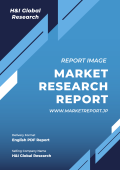1. Preface
1.1. Objectives of the Study
1.2. Market Segmentation & Coverage
1.3. Years Considered for the Study
1.4. Currency & Pricing
1.5. Language
1.6. Limitations
1.7. Assumptions
1.8. Stakeholders
2. Research Methodology
2.1. Define: Research Objective
2.2. Determine: Research Design
2.3. Prepare: Research Instrument
2.4. Collect: Data Source
2.5. Analyze: Data Interpretation
2.6. Formulate: Data Verification
2.7. Publish: Research Report
2.8. Repeat: Report Update
3. Executive Summary
4. Market Overview
4.1. Introduction
4.2. Pharmaceutical Manufacturing Market, by Region
5. Market Insights
5.1. Market Dynamics
5.1.1. Drivers
5.1.1.1. Increase in global demand for vaccines and drugs
5.1.1.2. Growing pharmaceutical R&D spending
5.1.1.3. Growth in geriatric population and incidence rate of chronic disorders
5.1.2. Restraints
5.1.2.1. Complexities associated with the production
5.1.3. Opportunities
5.1.3.1. Rise in the investment and funding programs in pharmaceutical manufacturing sector
5.1.3.2. Emergence in the advancements of pharmaceutical manufacturing technologies
5.1.4. Challenges
5.1.4.1. Logistics complexities and limited skilled professionals
5.2. Market Segmentation Analysis
5.2.1. Formulation: Increasing investment to support robust research and development of injectable formulations
5.2.2. Drug Development Type: Increasing use of outsourced pharmaceutical manufacturing due to its cost effectiveness
5.2.3. Route of Administration: Rising research and development activities parenteral drug delivery with rising prevalence of chronic disease
5.2.4. Therapy Area: Wave of innovations toward development of new treatment modalities
5.3. Market Trend Analysis
5.4. Cumulative Impact of High Inflation
5.5. Porter’s Five Forces Analysis
5.5.1. Threat of New Entrants
5.5.2. Threat of Substitutes
5.5.3. Bargaining Power of Customers
5.5.4. Bargaining Power of Suppliers
5.5.5. Industry Rivalry
5.6. Value Chain & Critical Path Analysis
5.7. Regulatory Framework
6. Pharmaceutical Manufacturing Market, by Formulation
6.1. Introduction
6.2. Capsules
6.3. Injectable
6.4. Powders
6.5. Sprays
6.6. Suspensions
6.7. Tablets
7. Pharmaceutical Manufacturing Market, by Drug Development Type
7.1. Introduction
7.2. In-House
7.3. Outsource
8. Pharmaceutical Manufacturing Market, by Route of Administration
8.1. Introduction
8.2. Inhalations
8.3. Oral
8.4. Parenteral
8.5. Topical
9. Pharmaceutical Manufacturing Market, by Age Group
9.1. Introduction
9.2. Adults
9.3. Children & Adolescents
9.4. Geriatric
10. Pharmaceutical Manufacturing Market, by Therapy Area
10.1. Introduction
10.2. Cancer
10.3. Cardiovascular Diseases
10.4. Diabetes
10.5. Pain
10.6. Respiratory Diseases
11. Americas Pharmaceutical Manufacturing Market
11.1. Introduction
11.2. Argentina
11.3. Brazil
11.4. Canada
11.5. Mexico
11.6. United States
12. Asia-Pacific Pharmaceutical Manufacturing Market
12.1. Introduction
12.2. Australia
12.3. China
12.4. India
12.5. Indonesia
12.6. Japan
12.7. Malaysia
12.8. Philippines
12.9. Singapore
12.10. South Korea
12.11. Taiwan
12.12. Thailand
12.13. Vietnam
13. Europe, Middle East & Africa Pharmaceutical Manufacturing Market
13.1. Introduction
13.2. Denmark
13.3. Egypt
13.4. Finland
13.5. France
13.6. Germany
13.7. Israel
13.8. Italy
13.9. Netherlands
13.10. Nigeria
13.11. Norway
13.12. Poland
13.13. Qatar
13.14. Russia
13.15. Saudi Arabia
13.16. South Africa
13.17. Spain
13.18. Sweden
13.19. Switzerland
13.20. Turkey
13.21. United Arab Emirates
13.22. United Kingdom
14. Competitive Landscape
14.1. FPNV Positioning Matrix
14.2. Market Share Analysis, By Key Player
14.3. Competitive Scenario Analysis, By Key Player
14.3.1. Agreement, Collaboration, & Partnership
14.3.1.1. Aenova and Galvita enter strategic partnership
14.3.2. Investment & Funding
14.3.2.1. Novo Nordisk invests Euro 2.1 billion in Hillerød manufacturing expansion
14.3.2.2. Eli Lilly promises additional USD 1.6 billion manufacturing investment
15. Competitive Portfolio
15.1. Key Company Profiles
15.1.1. AbbVie Inc.
15.1.2. Actiza Pharmaceutical Pvt. Ltd.
15.1.3. Aenova Group GmbH
15.1.4. Amgen Inc.
15.1.5. AstraZeneca PLC
15.1.6. Asymchem, Inc.
15.1.7. Azurity Pharmaceuticals, Inc.
15.1.8. Bayer AG
15.1.9. BioNTech SE
15.1.10. Boehringer Ingelheim International GmbH
15.1.11. Bristol-Myers Squibb
15.1.12. Cipla Limited
15.1.13. Eli Lilly and Company
15.1.14. F. Hoffmann-La Roche Ltd.
15.1.15. Famar Group
15.1.16. Gilead Sciences, Inc.
15.1.17. GlaxoSmithKline PLC
15.1.18. Johnson & Johnson Private Limited
15.1.19. Lonza Group AG
15.1.20. Merck Group
15.1.21. Moderna Inc.
15.1.22. Novartis AG
15.1.23. Novo Nordisk A/S
15.1.24. Pfizer, Inc.
15.1.25. Piramal Pharma Limited
15.1.26. Recipharm AB
15.1.27. Sanofi S.A.
15.1.28. Sun Pharmaceutical Industries Limited
15.1.29. Takeda Pharmaceutical Company Limited
15.1.30. Veranova, L.P.
15.2. Key Product Portfolio
16. Appendix
16.1. Discussion Guide
16.2. License & Pricing
医薬品製造のグローバル市場(2023-2030):カプセル、注射剤、粉末 |
| 【英語タイトル】Pharmaceutical Manufacturing Market by Formulation (Capsules, Injectable, Powders), Drug Development Type (In-House, Outsource), Route of Administration, Age Group, Therapy Area - Global Forecast 2023-2030 | |
 | ・商品コード:360i23DC117 ・発行会社(調査会社):360iResearch ・発行日:2023年10月 ・ページ数:186 ・レポート言語:英語 ・レポート形式:PDF ・納品方法:Eメール(受注後2-3日) ・調査対象地域:グローバル ・産業分野:医療 |
| Single User(1名利用、印刷可) | USD4,949 ⇒換算¥702,758 | 見積依頼/購入/質問フォーム |
| Enterprise License(企業利用、印刷可) | USD8,949 ⇒換算¥1,270,758 | 見積依頼/購入/質問フォーム |
|
※販売価格オプションの説明 ※お支払金額:換算金額(日本円)+消費税 ※納期:即日〜2営業日(3日以上かかる場合は別途表記又はご連絡) ※お支払方法:納品日+5日以内に請求書を発行・送付(請求書発行日より2ヶ月以内に銀行振込、振込先:三菱UFJ銀行/H&Iグローバルリサーチ株式会社、支払期限と方法は調整可能) |
| 医薬品製造市場は、2022年の5,544億7,000万米ドルから2030年には9,558億米ドルに達すると予測され、予測期間中の年平均成長率は7.04%です。 市場区分とカバー範囲 この調査レポートは、医薬品製造市場の包括的な見通しを提供するために、様々なサブ市場を分析し、収益を予測し、各カテゴリの新たな動向を調査しています。 - 剤形別では、カプセル剤、注射剤、粉末剤、スプレー剤、懸濁剤、錠剤が調査対象です。予測期間中は、懸濁液が大きな市場シェアを占めると予測されます。 - 医薬品開発タイプに基づき、市場はインハウスとアウトソースで調査されます。自社開発は予測期間中に大きな市場シェアを獲得すると予測されます。 - 投与経路別では、吸入剤、経口剤、非経口剤、局所剤が調査対象です。予測期間中、局所投与が大きな市場シェアを占めると予測されます。 - 年齢層別では、成人、小児・青少年、老年が調査対象です。小児・思春期は予測期間中に大きな市場シェアを占めると予測されています。 - 治療領域別では、がん、心血管疾患、糖尿病、疼痛、呼吸器疾患について調査しています。疼痛は予測期間中に大きな市場シェアを獲得すると予測されています。 - 地域別では、市場は南北アメリカ、アジア太平洋、ヨーロッパ、中東・アフリカで調査されます。米州は、アルゼンチン、ブラジル、カナダ、メキシコ、米国でさらに調査されています。米国はさらにカリフォルニア、フロリダ、イリノイ、ニューヨーク、オハイオ、ペンシルバニア、テキサスで調査されています。アジア太平洋地域は、オーストラリア、中国、インド、インドネシア、日本、マレーシア、フィリピン、シンガポール、韓国、台湾、タイ、ベトナムで調査されています。ヨーロッパ・中東・アフリカは、デンマーク、エジプト、フィンランド、フランス、ドイツ、イスラエル、イタリア、オランダ、ナイジェリア、ノルウェー、ポーランド、カタール、ロシア、サウジアラビア、南アフリカ、スペイン、スウェーデン、スイス、トルコ、アラブ首長国連邦、英国で調査されています。2022年の市場シェアは米州が37.37%で最大、次いで欧州、中東・アフリカです。 市場統計: 本レポートでは、主要7通貨(米ドル、ユーロ、日本円、英ポンド、豪ドル、カナダドル、スイスフラン)の市場規模と予測を提供しています。本レポートでは、2018年から2021年までを過去年、2022年を基準年、2023年を推定年、2024年から2030年までを予測期間としています。 FPNVポジショニングマトリックス FPNVポジショニングマトリックスは、医薬品製造市場を評価するための不可欠なツールです。事業戦略と製品満足度に関連する主要指標を分析し、ベンダーを包括的に評価します。これにより、ユーザーは特定のニーズに合わせた情報に基づいた意思決定を行うことができます。高度な分析により、ベンダーは4つの象限に分類され、それぞれ成功のレベルが異なります: フォアフロント(F)、パスファインダー(P)、ニッチ(N)、バイタル(V)です。この洞察に満ちたフレームワークにより、意思決定者は自信を持って市場をナビゲートすることができます。 市場シェア分析: 市場シェア分析は、医薬品製造市場のベンダーランドスケープに関する貴重な洞察を提供します。全体的な収益、顧客基盤、その他の主要指標に対する影響を評価することで、各社の業績と直面している競争環境について包括的な理解を提供します。この分析では、調査期間中の市場シェア獲得、断片化、優位性、業界再編などの競争レベルも明らかにします。 主要企業のプロフィール 本レポートでは、医薬品製造市場における最近の重要な動きを掘り下げ、主要ベンダーとその革新的なプロフィールを紹介しています。これには、AbbVie Inc., Actiza Pharmaceutical Pvt. Ltd., Aenova Group GmbH, Amgen Inc., AstraZeneca PLC, Asymchem, Inc., Azurity Pharmaceuticals, Inc., Bayer AG, BioNTech SE, Boehringer Ingelheim International GmbH, Bristol-Myers Squibb, Cipla Limited, Eli Lilly and Company, F. Hoffmann-La Roche Ltd., Famar Group, Gilead Sciences, Inc., GlaxoSmithKline PLC, Johnson & Johnson Private Limited, Lonza Group AG, Merck Group, Moderna Inc., Novartis AG, Novo Nordisk A/S, Pfizer, Inc., Piramal Pharma Limited, Recipharm AB, Sanofi S.A., Sun Pharmaceutical Industries Limited, Takeda Pharmaceutical Company Limited, and Veranova, L.P.などが含まれています。 本レポートでは、以下の点について貴重な洞察を提供しています: 1. 市場浸透: 主要企業の市場ダイナミクスと製品に関する包括的な情報を提供します。 2. 市場開拓: 新興市場と成熟市場セグメントへの浸透を詳細に分析し、有利な機会を強調します。 3. 市場の多様化: 新製品の発売、未開拓の地域、最近の開発、投資に関する詳細情報を提供します。 4. 競合他社の評価とインテリジェンス: 主要企業の市場シェア、戦略、製品、認証、規制当局の承認、特許状況、製造能力を網羅的に評価しています。 5. 製品開発とイノベーション: 将来の技術、研究開発活動、画期的な製品開発に関する知的洞察を行っています。 本レポートは、以下のような主要な質問に対応しています: 1. 医薬品製造市場の市場規模および予測は? 2. 医薬品製造市場で最も高い投資ポテンシャルを持つ製品、セグメント、アプリケーション、分野は? 3. 医薬品製造市場の機会を特定するための競争戦略窓口は? 4. 医薬品製造市場における最新の技術動向と規制の枠組みは? 5. 医薬品製造市場における主要ベンダーの市場シェアは? 6. 医薬品製造市場への参入に適したモードと戦略的動きは? |
1. 序論
2. 調査手法
3. エグゼクティブサマリー
4. 市場概要
5. 市場インサイト
6. 医薬品製造の世界市場規模:製剤別
7. 医薬品製造の世界市場規模:医薬品開発タイプ別
8. 医薬品製造の世界市場規模:投与経路別
9. 医薬品製造の世界市場規模:年齢層別
10. 医薬品製造の世界市場規模:治療領域別
11. アメリカの医薬品製造市場
12. アジア太平洋の医薬品製造市場
13. ヨーロッパ・中東・アフリカの医薬品製造市場
14. 競争状況
15. 競合ポートフォリオ
16. 付録
図 1. 医薬品製造市場の調査プロセス
図 2. 医薬品製造市場規模、2022年~2030年
図 3. 医薬品製造市場規模、2018年~2030年(百万米ドル)
図 4. 医薬品製造市場規模、地域別、2022年~2030年(%)
図 5. 医薬品製造市場規模、地域別、2022年vs2023年vs2030年(百万米ドル)
図 6. 医薬品製造市場動向
図 7. 医薬品製造市場規模、製剤別、2022年~2030年(%)
図 8. 医薬品製造市場規模、剤形別、2022年vs2023年vs2030年(百万米ドル)
図 9. 医薬品製造市場規模、医薬品開発タイプ別、2022年~2030年(%)
図 10. 医薬品製造市場規模、医薬品開発タイプ別、2022年vs2023年vs2030年(百万米ドル)
図 11. 医薬品製造市場規模、投与経路別、2022年~2030年(%)
図 12. 医薬品製造市場規模、投与経路別、2022年vs2023年vs2030年(百万米ドル)
図 13. 医薬品製造市場規模、年齢層別、2022年~2030年(%)
図 14. 医薬品製造市場規模、年齢層別、2022年vs2023年vs2030年(百万米ドル)
図 15. 医薬品製造市場規模、治療領域別、2022年~2030年(%)
図 16. 医薬品製造市場規模、治療領域別、2022年vs2023年vs2030年(百万米ドル)
図 17. 米国の医薬品製造市場規模、国別、2022年~2030年(%)
図 18. 米国の医薬品製造市場規模、国別、2022年vs2023年vs2030年(百万米ドル)
図 19. 米国の医薬品製造市場規模、州別、2022年~2030年(%)
図 20. 米国医薬品製造市場規模、州別、2022年vs2023年vs2030年(百万米ドル)
図 21. アジア太平洋医薬品製造市場規模、国別、2022年~2030年(%)
図 22. アジア太平洋医薬品製造市場規模、国別、2022年vs2023年vs2030年(百万米ドル)
図 23. 欧州・中東・アフリカ医薬品製造市場規模、国別、2022年~2030年(%)
図 24. 欧州・中東・アフリカ医薬品製造市場規模、国別、2022年vs2023年vs2030年(百万米ドル)
図 25. 医薬品製造市場、FPNVポジショニングマトリックス、2022年
図 26. 医薬品製造市場シェア、主要企業別、2022年

❖ レポートの目次 ❖
| ★調査レポート[医薬品製造のグローバル市場(2023-2030):カプセル、注射剤、粉末] (コード:360i23DC117)販売に関する免責事項を必ずご確認ください。 |
| ★調査レポート[医薬品製造のグローバル市場(2023-2030):カプセル、注射剤、粉末]についてメールでお問い合わせ |









